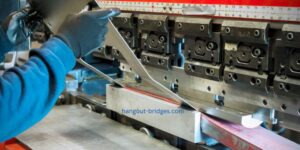Key Takeaways
- Structured data cabling is important for scalability and reliability.
- Types of data cabling options available for businesses.
- Best practices for installing and maintaining data cabling.
- Common challenges and solutions in data cabling projects.
The Importance of Structured Data Cabling
A reliable and scalable data network is crucial in today’s fast-paced business environment. For instance, structured cabling San Francisco lays the foundation for robust networking, ensuring efficient data management. Proper cabling infrastructure can save significantly over time by reducing downtime and maintenance costs. Businesses that invest in high-quality cabling infrastructure invest in their future capabilities, allowing them to handle increasing data loads and advanced networking requirements smoothly.
Effective data cabling supports current networking needs and anticipates future technological advancements. This foresight helps businesses stay competitive and adaptable to new demands, creating a seamless transition as they upgrade their systems. Staying ahead with a well-planned cabling system in a constantly evolving technological landscape can be a significant competitive advantage. A robust cabling infrastructure promotes reliable connectivity, crucial for efficient communication, data transfer, and overall productivity.
Types of Data Cabling for Businesses
There are various types of data cables available, each serving different needs. Choosing the right cabling solution often depends on an organization’s specific requirements. Understanding the differences between these options can help businesses make informed decisions:
- Cat5e: This type of cable is suitable for small to medium-sized businesses with basic networking needs. It is cost-effective and can support up to 1 Gbps speeds, making it ideal for smaller office environments with standard internet usage and basic networking applications.
- Cat6: Ideal for businesses requiring higher speeds and bandwidth. Cat6 cables can support speeds up to 10 Gbps over short distances, providing higher performance and reducing crosstalk compared to Cat5e. This makes them a good choice for more demanding applications and larger networks.
- Fiber Optic: Best for large organizations needing long-distance and highly secure data transmission. Fiber optic cables offer unparalleled speed and bandwidth capabilities over long distances, making them perfect for large campuses or data centers that require high-speed, high-capacity data transfer without signal degradation.
Each of these cabling options offers unique benefits, and the choice often hinges on a business’s specific operational needs, budget, and long-term goals. The appropriate cabling is fundamental to achieving optimal network performance and future infrastructure-proofing.
Best Practices for Data Cabling Installation
Proper installation is key to a successful cabling project. Implementing best practices during installation ensures the cabling system is reliable and efficient. Some best practices include:
- Planning and Designing: Before installation, plan a scalable network infrastructure that can support future growth and technology advancements. A well-thought-out design includes considering the current and potential future locations of hardware, understanding the physical layout of the space, and accounting for future expansion.
- Using High-Quality Materials: Invest in superior materials and components to ensure the longevity and reliability of the cabling system. High-quality cables and connectors reduce the risk of future failures and the need for premature replacements.
- Labeling and Documenting: Clearly label cables and maintain detailed layout documentation to facilitate future maintenance and upgrades. Proper labeling helps quickly identify and troubleshoot any issues that arise and assists in efficiently managing the network infrastructure.
- Compliance: Follow industry standards and guidelines to ensure compliance with safety and efficiency regulations. Adhering to standards such as those set by TIA/EIA ensures that the installation meets recognized best practices for performance and quality.
By adhering to these best practices, businesses can ensure that their data-cabling infrastructure is robust, reliable, and capable of supporting their networking needs now and in the future. Proper installation minimizes the risk of network issues and ensures efficient and uninterrupted data flow within the organization.
Maintaining Your Data Cabling System
Regular maintenance is essential to keep the data cabling system performing optimally. This includes periodic inspections, cleaning connectors, and checking for signs of wear and tear. Implementing preventive maintenance practices can help identify potential issues before they escalate into major problems. Maintenance should also involve testing connectivity to ensure all cables function correctly and promptly replace damaged or worn components.
Adopting a routine maintenance schedule ensures the system remains efficient and minimizes the risk of unexpected downtimes. This proactive approach also extends the lifespan of the cabling infrastructure. Regular checks help detect and rectify minor issues before they become major disruptions. Efficient maintenance practices contribute to continued optimal performance, crucial for maintaining business operations and productivity.
Common Challenges and Solutions in Data Cabling
Data cabling projects can encounter various challenges. Some common issues include:
- Interference: External sources like electrical equipment can disrupt the signal. Using shielded cables can mitigate this. Shielded cables are designed to block interference from external sources, ensuring a clean and stable signal transmission.
- Cable Management: Poor management can lead to tangling and confusion, but using cable trays and labels helps keep cables organized. Proper cable management practices make the installation look neater and make it easier to perform maintenance and troubleshoot issues.
- Future-proofing: Technology evolves rapidly, making it essential to design a flexible infrastructure. Using modular and adaptable components ensures longevity. Planning for future expansions and upgrades by using scalable solutions helps avoid the need for frequent and disruptive overhauls.
Addressing these challenges through effective strategies and solutions ensures that the data-cabling infrastructure remains robust and prepared for future needs. By anticipating and managing these common issues, businesses can maintain optimal network performance and minimize disruptions.
Conclusion
Implementing effective data-cabling solutions is vital for modern businesses. Organizations can build a reliable and scalable network by understanding the types of cables, following best practices, and addressing common challenges. Regular maintenance ensures the system remains in top condition, supporting the ever-increasing data transmission demands. A well-implemented cabling system supports current operational needs and positions the business for future growth and technological advancements. Investing in structured cabling today paves the way for seamless operations and competitive advantage in the years to come.









